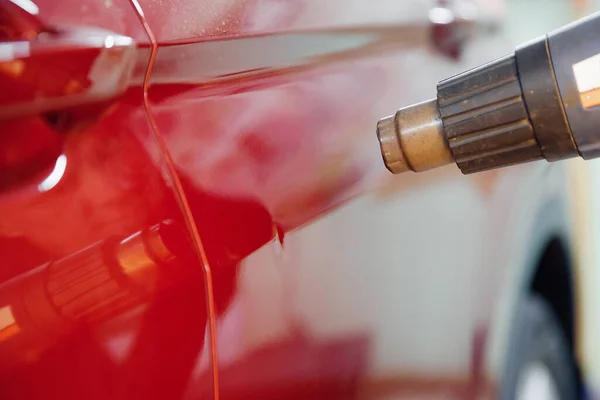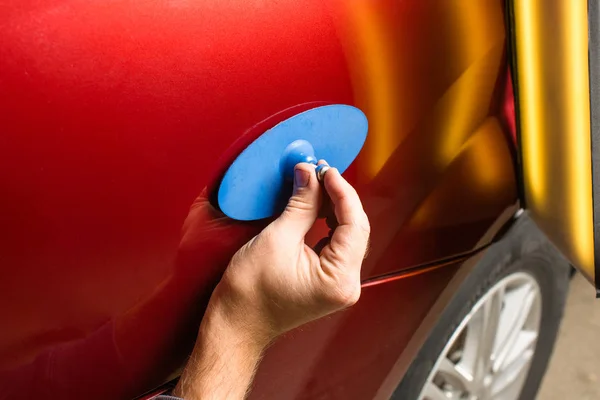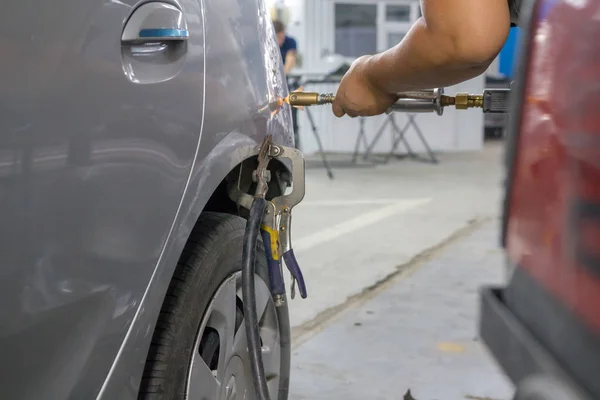Quick Auto Body Dent Repair Tips For Restoring Your Car's Pristine Exterior
Maintaining the pristine appearance of your car's exterior is a priority for many vehicle owners. Dents can occur due to various factors, including minor accidents, hail damage, or even door dings from other vehicles. Fortunately, there are several effective tips and techniques for quick auto body dent repair. This article explores methods to restore your car’s exterior, ensuring it looks as good as new. Visit www.dentwerxpaintlessdentrepair.com for more details.
Understanding the Types of Dents
Before diving into repair techniques, it is essential to understand the different types of dents that can affect your car's exterior. Dents can vary significantly in size, depth, and location, which can influence the repair method you choose.
Minor Dents
Minor dents are small, shallow imperfections often caused by minor collisions or accidental impacts. These types of dents typically do not damage the paint and can be repaired using simpler techniques, such as suction cups or heating methods. Minor dents are often noticeable but do not significantly affect the vehicle's overall aesthetics.
Major Dents
Major dents are larger and may involve significant surface damage or paint cracking. These dents often require more advanced repair methods, including professional services. Understanding the severity of the dent is crucial in determining the right approach for repair. Major dents can compromise the structural integrity of the vehicle and may require welding or panel replacement.

DIY Dent Repair Techniques
- The Plunger Method: Wet the edge of a plunger and place it over the dent. Use gentle push-and-pull motions to create suction, which can pop out shallow dents, especially on flat metal surfaces.
- Hot Water and Hair Dryer: Pour boiling water on a dented plastic part (like a bumper), then heat with a hair dryer. While the plastic is still soft, push from behind to pop the dent out.
- Dry Ice Method: Wearing gloves, rub dry ice over the dented metal surface. The rapid cooling causes the metal to contract, helping the dent to pop out naturally.
- Vacuum Cleaner Method: Seal a vacuum cleaner hose around a small dent and turn it on. The suction created can pull the dent out, making this method useful for flat, shallow dents.
- Hair Dryer and Compressed Air: Heat the dented area with a hair dryer, then quickly spray it with compressed air. The rapid temperature change causes the metal to contract and pop the dent back into shape.
Professional Dent Repair Options
While DIY methods can effectively address minor dents, some situations may require professional assistance. If you're dealing with significant damage or if the paint is compromised, seeking help from a professional is advisable.
Paintless Dent Repair (PDR)
Paintless dent repair is a popular technique used by professionals to restore a vehicle's exterior without the need for repainting. This method involves accessing the back of the panel and applying pressure to push the dent out from behind. PDR is especially effective for shallow dents and retains the vehicle's original paint, preserving its value. The process is quick and can often be completed in a matter of hours, making it a convenient option for car owners.

Traditional Body Shop Repair
In cases of major damage, traditional body shop repair may be necessary. This process involves sanding down the damaged area, applying filler, and repainting the section to match the car's original color. Although this method can be more time-consuming and expensive, it ensures a seamless repair that restores the car's exterior to its original state. This approach is best for deeper dents that have compromised the paint or underlying metal structure.
Cost Considerations
When deciding between DIY and professional repairs, consider the potential costs. DIY methods typically require minimal investment in tools and materials, while professional services can vary significantly in price depending on the extent of the damage. However, investing in professional repair can be worthwhile to maintain your vehicle's resale value and ensure a high-quality finish.
Preventive Measures for Future Dents
After successfully repairing dents, it's wise to take preventive measures to avoid future occurrences.
Parking Strategies
Being mindful of where you park can significantly reduce the risk of dents. Opt for spaces away from heavy traffic or crowded areas. Additionally, using covered parking can protect your vehicle from hail damage or falling debris. Avoid parking near shopping carts or other potential hazards that could lead to door dings.
Protective Coatings
Consider applying protective coatings or films to vulnerable areas of your car. These products can help absorb impact and prevent scratches and dents. Clear paint protection film is especially popular for high-impact areas, such as hoods and bumpers. It provides an additional layer of defense against minor abrasions and environmental factors.
Regular Maintenance
Regularly washing and waxing your vehicle not only enhances its appearance but also protects the paint. A good wax layer can prevent dirt and debris from scratching the surface, thereby reducing the risk of dents over time. Additionally, routinely inspecting your vehicle for scratches or paint chips allows you to address any issues before they escalate.
Educating Other Drivers
Encouraging safe driving habits among family and friends can also reduce the risk of dents. Remind others to be cautious when opening their car doors and to avoid parking too close to other vehicles. Fostering a culture of awareness around vehicle safety can significantly minimize the chances of damage.

